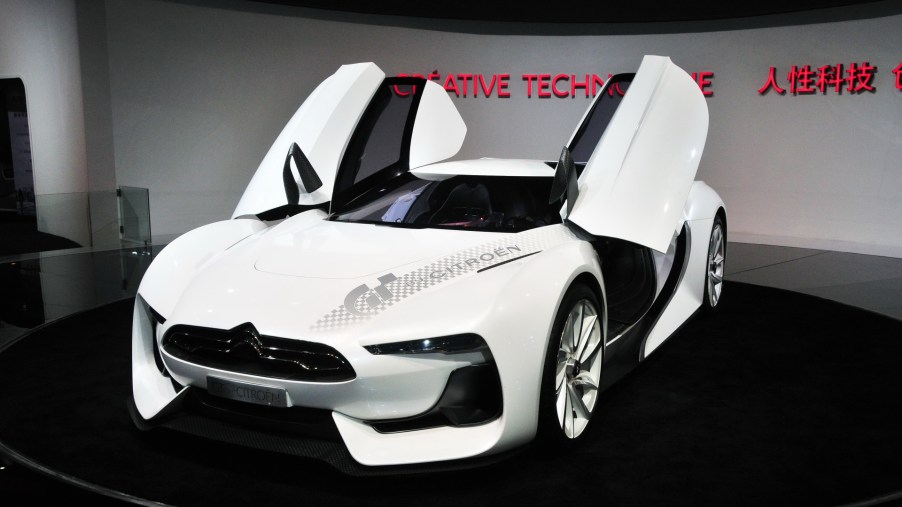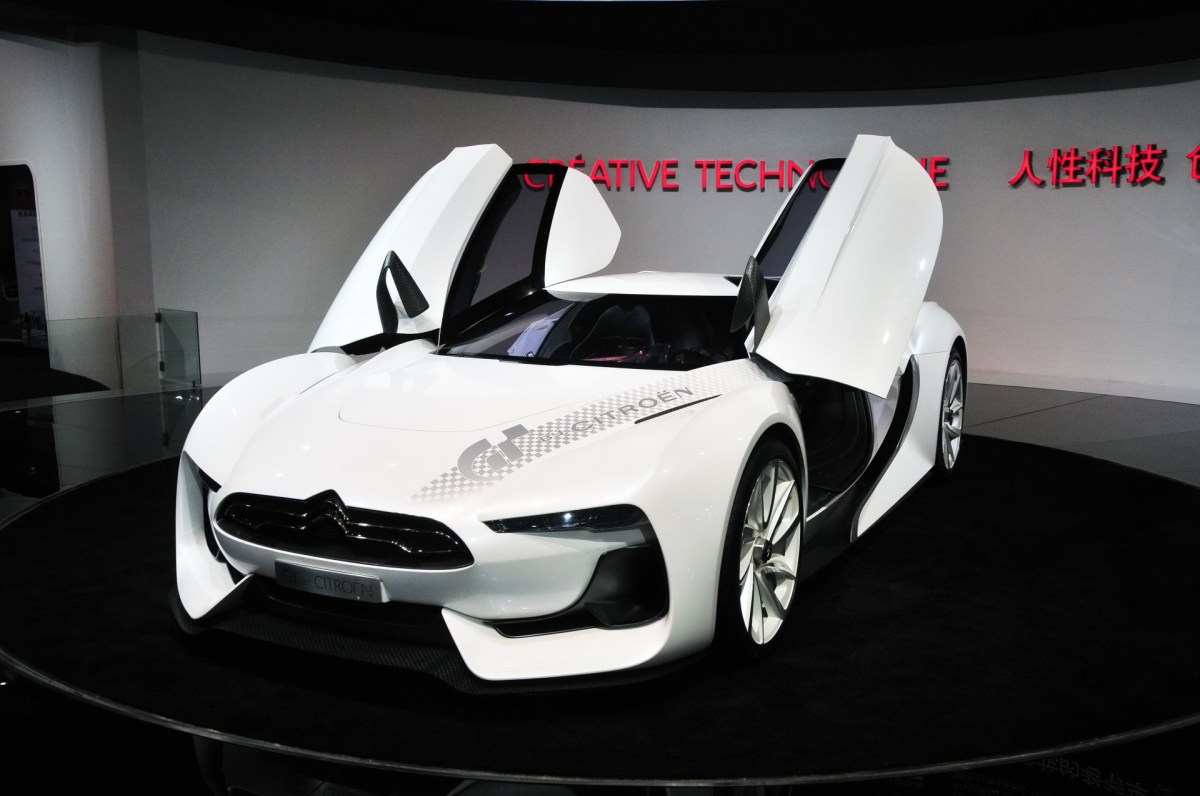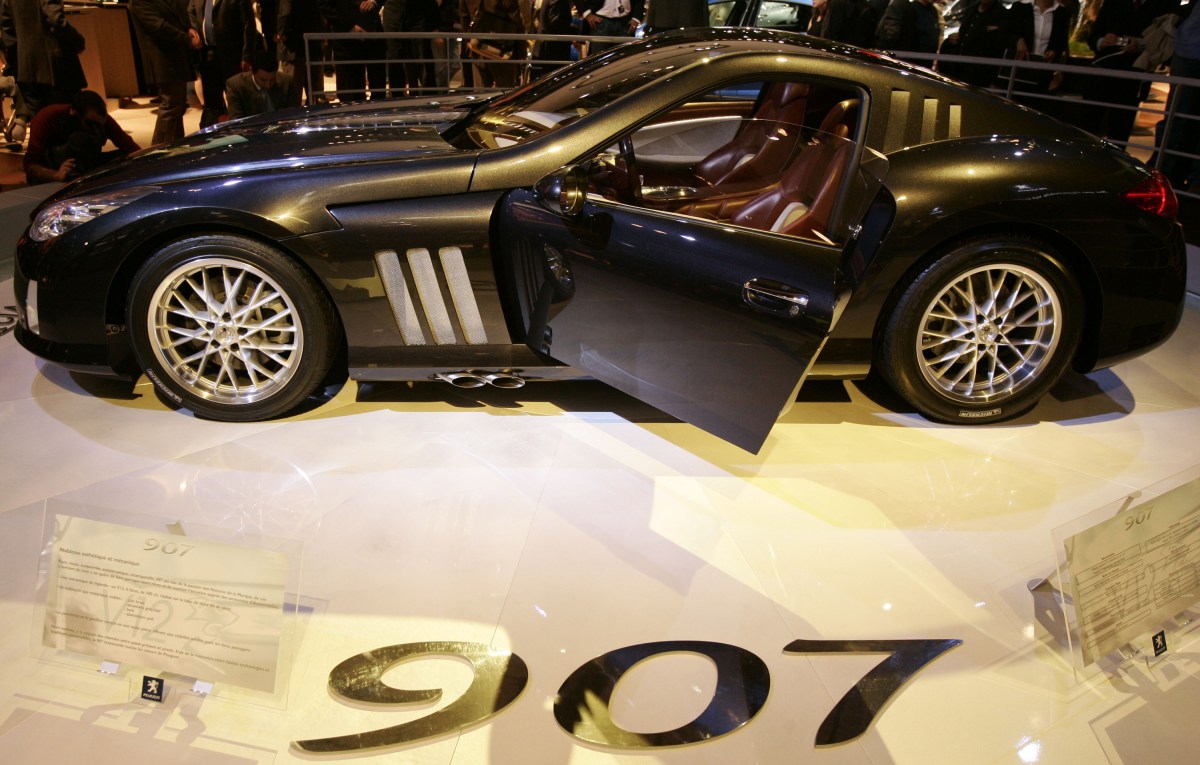
These Are the 6 Best French Supercars That Aren’t Bugattis
The French have an interesting relationship with the automobile. No idea is too wild or extreme, and many of the country’s greatest cars are what we might consider ‘outside of the box’ designs. But that certainly doesn’t mean that they are bad. In fact, the French have made some of the greatest cars of all time.
When we think about French supercars, naturally, Bugatti springs to mind. We could fill several lists with all the good and great cars Bugatti has built. Since they stand in a class of their own and are primarily owned, designed, and engineered by Volkswagen Group, we’ll omit them from this list. Here are six great French supercars that aren’t Bugattis.
Aixam Mega Track
Sometimes cars are so weird that they become cool, just because they are bonkers. The Aixam Mega Track may be the most bonkers supercar ever. Built between 1995 and 2000, the Mega Track is a mid-engine, off-road capable supercar with a Mercedes-built V12.
The Aixam Mega Track has a minimum ground clearance of eight inches and, thanks to air suspension, could rise to 13 inches. That is more than a Jeep Wrangler. A Mercedes V12 sits behind the four-passenger cabin and produces 389 horsepower. However, that V12 has a lot of car to move around, as the Mega Track is wider than a Hummer H1 and weighs in at 5,027 pounds. As such, performance does suffer, and the Mega Track has a very un-supercar 0 to 60 time of 5.6 seconds and a top speed of 155 mph. On the plus side, it can do that on any terrain.
Citroen GT

In 2008, Citroen introduced the GT concept car at the Paris Motor Show. The car is a collaborative effort between the French automaker and Japanese racing simulation developer Polyphony Digital. The GT was intended to be a concept for the Gran Turismo 5 video game and was playable in four different configurations.
In 2009, Citroen announced that it would put the stunning supercar into production with an extremely limited run of six cars. The sleek supercar has a Ford V8 producing 646 horsepower and costs $2.1 million. In 2010 production was suspended due to the enormous engineering costs associated with the project, but at least one actually made it onto the road.
Peugeot 907

The Peugeot 907 is a one-off supercar that was first revealed in 2004. The car very much looks like a Mercedes-McLaren SLR with a Peugeot front end.
Powered by a 6.0-liter V12 that consists of two V6s joined together, the 907 produces 500 horsepower. Power is sent to the rear wheels through a six-speed sequential shifting transmission, and the entire chassis is made of carbon fiber. The 907 never made it into production, but the prototype is fully functional and street driveable, so we think it belongs on the list.
Renault Sport R.S.01
Renault’s R.S. 01 supercar came along in 2014 as a purpose-built race car. Co-developed with engineers at Nissan, the mid-engine GT3-class car uses the same 3.8-liter twin-turbocharged V6 as the Nissan GT-R. Producing 550 horsepower, the R.S. 01 has a top speed of 186 mph.
The chassis came from race car manufacturer Dallara and used a carbon fiber chassis with an integrated steel roll cage. Buyers of the R.S. 01 could race the car in Renault’s one-make Sport Trophy or compete globally in the GT3 category.
Venturi Atlantique 300 Bi-Turbo
Venturi is based in Monaco and run by a pair of French engineers. The company started in 1984, but the world had to wait until 1998 to get the Atlantique 300 Bi-Turbo. The mid-engine 300 used a Renault-derived 3.0-liter V6 engine. With a pair of turbochargers fitted, the 300 Bi-Turbo made 306 horsepower.
The car is quite stylish and well proportioned and takes a few design cues from the Ferrari F355 and 456GT. With a 0 to 60 mph time of 4.7 seconds and a top speed of 171 mph, it was a close competitor of the Lotus Esprit V8. Venturi only made 13 examples between 1999 and 2000.
Venturi 400 GT
The Venturi 400, also known as the 400 Trophy, was initially conceived as a race car in 1992. Designed for a one-make series, similar to the Porsche Supercup, the racecars featured a 3.0-liter twin-turbocharged V6 that produced 408 horsepower. Performance was brisk, and the Trophy cars could run from 0 to 60 mph in 4.1 seconds.
The 400 GT became the road-going version of the Trophy race car. Only 15 were made, and the changes necessary to convert the race car into a road car were minimal. A more comfortable interior and a catalytic converter were the only significant differences between the race and road cars.
There is so much more to French supercars than Bugatti. From major manufacturers developing halo models to small boutique companies making wild road cars. One thing is for certain, French supercars will always be interesting and have a unique take of what a car should be.


